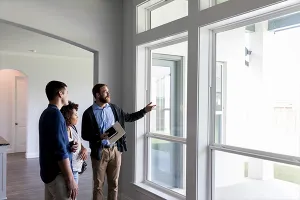Affordable housing is becoming an expanding issue for cities and towns across the country, as population and urbanization growth outpaces income growth for increasingly more Americans. Monthly rental rates now compete with mortgage payments in many parts of the country. Homeless populations are swelling.
Housing authorities struggle to meet demand for working class families, who can’t always afford to live in the cities where they work, and must commute from outlying areas and sleeper towns of trailer parks and cheaper housing. One notion for dealing with this issue is building affordable housing with shipping containers, which are stockpiled at ports and distribution centers throughout the country. It seems like a good idea, but is it?
These corrugated metal boxes are ubiquitous. We see them on truck trailers and trains, and if you live near a seaport you’ve probably seen them stacked a dozen high at the shipyards. They look sturdy, and they are. When loaded with cargo the containers can weigh over 33 tons each, yet they can be stacked eight to nine high on a freighter ship and sent from Shanghai to Seattle. They’ve been the major method of global shipping and distribution since the late 1950s.
Now, there are estimated to be 17 million of these containers all over the globe. There have been many reports of a glut of containers, bottling up harbors and clogging the landscape. But getting an accurate inventory on these units is like counting birds — they’re always flying around, and it’s hard to know if you’ve tallied them already.
The Intermodal Steel Building Units Association (ISBU) estimates the number of surplus containers in the United States to be in the lower tens of thousands, as opposed to media reports of up to 2 million, because most containers at ports are waiting to be used, and represent a seasonal surplus of the movement of goods. China manufactures most of the containers in the world, and when they basically stopped production in 2008 in anticipation of a slowdown in export growth it created a subsequent shortage in some markets. Yet our trade surplus with China has resulted in a growing inventory. There are plenty of used shipping containers available for sale. But that’s just the beginning of turning them into housing.
Cargo container homes started getting attention in the late 1980s, but have really gained popularity this century, when the term “cargotecture” was coined in 2003. The strength of the structures and universal design leant itself to modular construction that could be stacked and laid out like Lego blocks. The sky was the limit to what could be done, and there are plenty of million-dollar mansions to illustrate. The containers were cheap, but making them habitable wasn’t. It is estimated that with the framing, plumbing, wiring, insulating, door and window installation, and finishing (interior and exterior), using a container only saves about 5-10 percent of material costs (primarily in floor and ceiling joists) compared to traditional stick framing.
But what is not gained in material savings is most definitely made up for with time. A container home can be finished within a month, while a traditional home of the same size might take several months. The process can be expedited by pre-fabricating the container as much as possible before placing it on site, similar to what is done with modular wood housing. A clear span warehouse with a concrete floor can serve as a fabrication facility, since the empty containers can be handled with forklifts. Transportation of the units to their destination is a matter of trucking, although a crane or forklift would need to assist with the offload and placement of the containers, especially if they are being set on foundation walls, piers or each other.
Another major cost savings cargo housing can afford is in low maintenance. Used containers come in several grades, with Cargo Worthy (CW) being the best. Many of these containers are “single-use” and don’t make it back to the exporting country. These are the best containers for housing. Those classified as Wind and Water Tight (WWT) might have more ocean trips and damage. Rust is a limited issue, because shipping containers are made with a steel alloy trademarked as COR-TEN, also known as weathering steel because it creates a thin layer of rust that protects against further corrosion. This light, orange layer is referred to as its patina, giving it shabby-chic cachet.
But what about the interior? What needs to be done so it doesn’t feel like you’re living in a …well, a shipping container? The first item to inspect is the floor, which is most likely marine-grade plywood treated with an insecticide. It needs to be removed, if damaged, or encapsulated with a resin, epoxy sealant or underlayment and flooring. Any evidence of liquid spills should also be treated proactively. Door and window openings can be cut with hand grinders or plasma cutters and reinforced with structural steel. Then, the interior would be framed, wired and plumbed so it can be insulated and finished just like traditional housing. Spray foam insulation works best because it creates a vapor seal with the metal and prevents condensation, which is referred to as “container sweat”. Not good.
Ventilation, either passive or mechanical, is critical to container home design.
All of this is very doable, as evidenced by the growing popularity of not just container houses, but communities that provide affordable housing for students, low-income workers and others seeking shelter from the storm. Amsterdam has Keetwonen, a student housing complex utilizing one thousand containers; London has Container City, a company that fabricates containers for affordable housing projects; and Mumbai, India, is proposing two towers with 2,400 containers, dubbed the Containerscraper.
Here in the United States, container housing projects cover the landscape from the “LEGO Apartments” in New Haven, Conn., to a recent development for veterans in Los Angeles called Potters Lane, where containers are turned into housing on an assembly line and delivered to the site ready to be stacked and clad with a contemporary facade. It’s modular design with options for appearance.
What are the major pros and cons of using shipping containers for housing? The initial issue with turning shipping containers into housing is that shipping containers weren’t designed to be turned into housing. They were meant to be airtight, extremely sturdy, and withstand salt water spray. Door and window penetrations require welded support; floors need sealing; walls need framing for insulation, utilities and finishing; and the unit must breathe to prevent condensation. This is all a matter of tooling and training, however.
Bigger issues come into play during the permitting processes. Container homes suffer the stigma of other tiny homes, in that they haven’t been around long enough to have found their place in structure classification, building and fire codes, and zoning regulations. A container community in Oakland, called Containeropia, is testing the waters of municipal building and zoning laws, while offering monthly rentals at a fraction of the cost of other Bay Area housing options. They’ve even mounted the homes on trailers for greater mobility, and to make them a DMV issue and not a building department concern.
The benefits of using shipping containers for housing are more numerous, particularly in their availability. Online sites, such as ContainerAuction.com, list sales yards across the country. A decent 40’ length unit will cost about $1,500-$4,000, depending upon proximity to the source. Having it trucked will cost about $1.50-$2.00/mile. Surplus containers will be available so long as they remain the primary method for the global distribution of goods. Units get cycled out and replaced when they’re no longer seaworthy; many containers are single use; and our trade imbalance all contribute to a healthy used-container inventory. They don’t weigh enough to make them cost effective to recycle or even return to China, where it’s cheaper to make a new one.
In terms of smart growth options for affordable housing, the primary advantage of containers is that they can be pre-fabricated and sited quickly and cost effectively through savings in labor and maintenance. The exterior can be given a coat of marine grade paint if located along coastal areas; ceramic paints are also being used because of their purported insulating qualities; and exterior finishes from concrete or vinyl siding to adobe offer aesthetic and insulation enhancements that require very little upkeep.
Their modular design and stackability give them vertical opportunities for infill development beyond wood framing options. They can be placed on four piers as a foundation because all the weight is transferred to the corner posts. If properly attached with twist-locks (which hold them together at sea) or welds they can withstand 100 mph winds. They’re resistant to earthquakes, fire, mold and termites; and if steel studs are used for framing, the structure will be primarily wood-free and made from the most recycled material on the planet — metal. Upcycling materials extends the embodied energy that went into their production, increasing their sustainability and reducing the need to harvest or extract natural resources.
When incorporated into a housing complex, further cost efficiencies can be achieved by having each unit open to a shared, central atrium that could provide laundry facilities, central heating and cooling systems, utility access and distribution, as well as stairways, mezzanines and elevators for multiple level projects. This design concept also alleviates the feeling of living in a box and offers an architectural contrast to the modular containers.
In Miami, finding affordable housing is difficult, but finding surplus shipping containers isn’t. Danielle Blake is the Senior Vice President of Housing & Government Affairs for the MIAMI Association of REALTORS®. She drives past an area she refers to as “The Container Graveyard,” a privately owned lot of excess containers from Port Miami. The rising popularity of building with containers could offer a solution for addressing affordable housing needs. Miami-Dade County had surplus lots to donate for affordable housing projects, but no one had tried this before.
“I know it’s a solution. We have plenty of containers, but we just don’t have that model in Miami,” Blake says. So, they’re creating one.
The MIAMI Association of REALTORS® has partnered with the county, along with coalition partners including a nonprofit property management organization and forprofit companies to pre-manufacture and site a model housing unit made from two 40’ shipping containers. They propose to “build a prototype to identify any challenges to container home building and homeownership in our market, and to demonstrate to the community that container-homes can be cost effective, functional and aesthetically pleasing.”
The biggest hurdle was getting through the zoning process, because container housing wasn’t addressed in the code. But it wasn’t prohibited, so the project moved forward, and now the pieces are in place to prefabricate and place the prototype on site. It’s been a learning process.
“We have come so far since an idea last October to the point where we’re ready to break ground,” Blake states.
The model established in Miami will be an example for other communities, and can hopefully become an integral solution to the larger issue of affordable housing here in the United States, as it is in other countries.
Kurt Buss is a freelance writer who lives in Loveland, Colorado, with over 25 years of experience managing recycling programs along Colorado’s Front Range. He writes about resource conservation, being a Baby Boomer, and enjoying the Rocky Mountains. You can visit his website at www.kurtbusscoloradofreelancewriter. com







